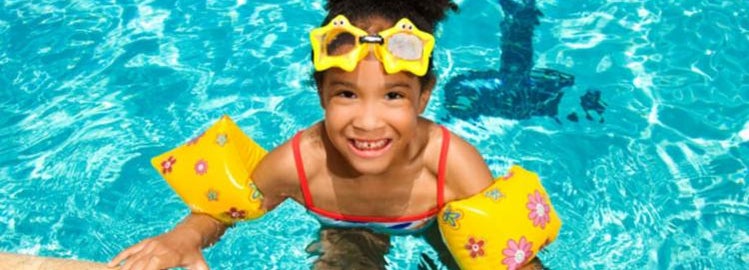Stay Cool with Swimming Pool Risks

It’s summer, and thoughts of Americans everywhere turn to water. Whether it’s in the pool, on the lake, at the ocean or in the river, water draws people almost magnetically as the weather turns hot. In fact, swimming pool trade groups teamed up to make May “National Water Safety Month” in the United States to make consumers “water aware.”
Swimming pools are popular but also present a risk to a homeowner. While homeowners are welcoming friends and family with a clear, clean pool, they’re also assuming significant financial risks by doing so. What’s more, they are unwittingly facing liability from strangers since pools are an attractive nuisance that can pose a risk to uninvited guests, children in the neighborhood and intruders. Homeowners can be found liable for injuries to uninvited guests.
Drowning is the second-leading cause of unintentional injury-related death for children ages 1 to 14 years, reported the American Red Cross. Its survey of more than 1,000 adults showed that more than 90% of families with young children plan to be in the water this summer, and almost half (48%) plan to swim in a place with no lifeguard. If that’s on your property, be prepared.
Insurance plays a key role in protecting consumers who have pools on their property. Homeowners and liability insurance cover bodily injury and liability protection in the event of an injury or claim. Plus, insurance carriers, by virtue of inspecting or requiring compliance with building codes, can make a swimming pool safer.
If you have a swimming pool:
1. Let your Trusted Choice® insurance professional or insurance carrier know.
Coverage is most likely to be provided if the structure and risks are known prior to a claim. Insurance carriers view pools as presenting a unique and heightened set of risks. Put simply, a swimming pool will increase the risk of property damage or a liability claim, as compared to a home without one.
Typically, a homeowners insurance policy covers property damage to a home and additional structures. An in-ground pool usually is considered an “additional structure” in insurance parlance, as are sheds and detached garages. An above-ground pool may be considered “personal property” and insured under that section of the homeowners policy.
Homeowners insurance also offers liability coverage in the event a homeowner is hit with a claim or lawsuit as a result of an incident in or near the swimming pool. Friends and family who are injured in a pool accident may not want to sue, but may need to sue in order to pay medical bills and replace lost income.
2. Check the amount of homeowners property coverage.
A standard coverage amount for additional structures on a property is 10 percent of the amount written for the home itself. Thus, a $500,000 home might have $50,000 of property damage coverage for other structures. Ask your independent agent to help you determine the proper amount of property coverage.
3. Check the amount of homeowners liability coverage.
One claim can pierce a standard homeowners liability insurance limit, so check with your Trusted Choice® insurance professional to discuss increasing the limit and/or adding an umbrella policy. An umbrella (or excess liability) policy pays up to a limit (usually $1 million) for claims.
4. Check the perils covered.
Homeowners insurance comes in a variety of types, and some policies protect against additional “perils” in addition to fire, lightning and windstorm. Other perils may be excluded. Check which type of policy you have and whether it suits your needs. For pool owners in the north, note that damage by freezing/thawing is usually not covered by homeowners insurance.
5. Check that your pool is up to code, and whether any features are specifically not permitted or insured.
Plumbing, fencing and deck requirements all can vary by state and locality. A homeowner increases the risk of loss if a pool is not up to code. Additionally, amenities such as diving boards and slides are particularly hazardous and may be excluded by building code or can be uninsured.
The U.S. Centers for Disease Control noted that drowning prevention requires appropriate adult supervision while children are in the water, as well as multiple layers of protection (such as four-sided isolation fencing, pool alarms, and locked gates) to keep children away from swimming pools.
